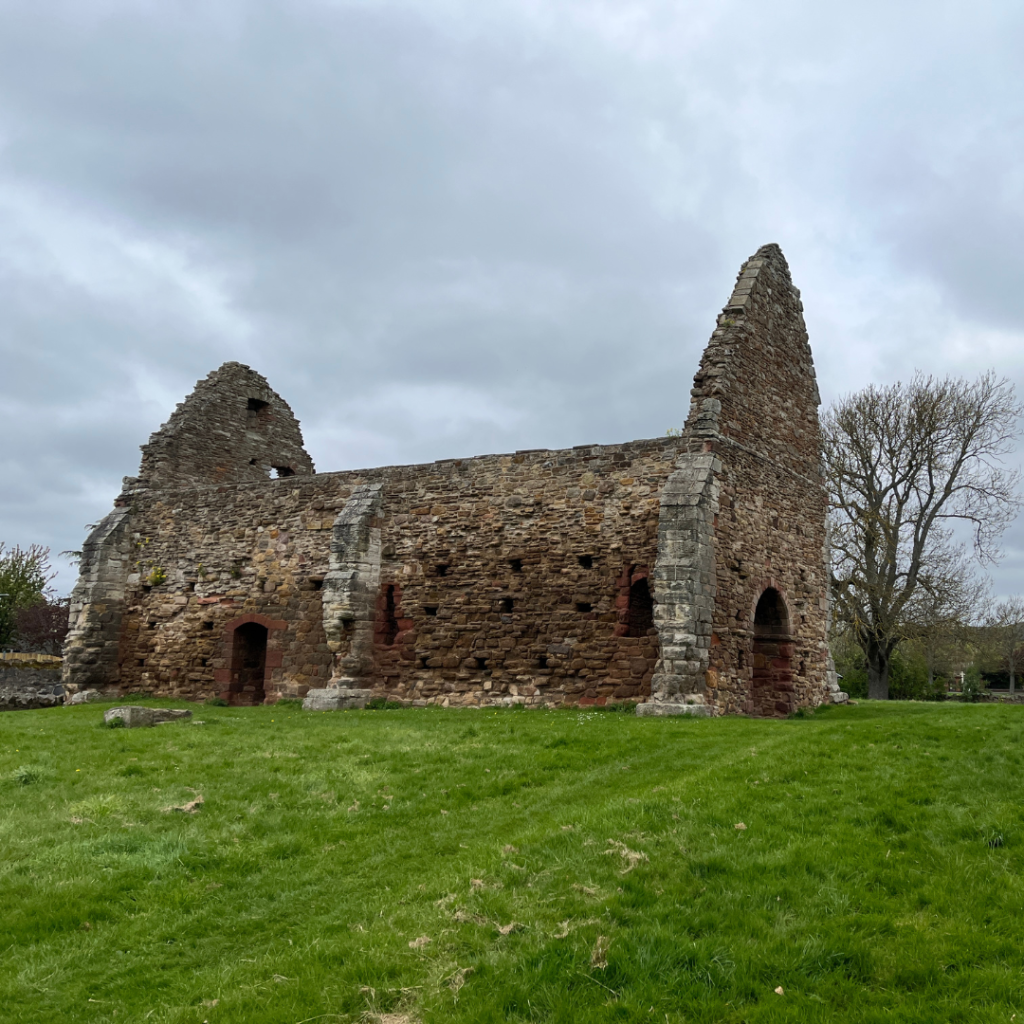St Martin’s Kirk, Haddington

Very, very few 12th-century parish churches survive in Scotland today. Through wars, Reformation, and general neglect, most such buildings have sadly been lost to us. So, when I spotted an old ruin in Haddington – and realised its age – I was delighted!
A Gift From Countess Ada
Ada de Warenne was born into a powerful family, her father being the 2nd Earl of Surrey. She then married into an even more powerful family. Her father-in-law was King David I of Scotland and her husband was Henry, Earl of Northumbria, and Earl of Huntingdon. Later, Countess Ada was the mother of two Scottish kings – Malcolm IV (The Maiden) and William I (The Lion).
As part of her marriage settlement, she was granted the privileges of Haddington, amongst others.
She chose to gift lands around the town to Alexander de St Martin, sheriff of Haddington, who in turn gifted it to the newly founded (by Countess Ada) Cistercian Nuns. They had a convent nearby, dedicated to St Mary. Countess Ada ensured that the nunnery was richly endowed.
St Martin’s Kirk, Haddington
St Martin’s Kirk was built for the Nuns of Haddington. It lies less than a mile away from where the Nunnery was located. The Nuns worshiped at St Martin’s, as did the local community.
It was never a grand building, consisting only of a chancel and nave. The chancel has disappeared over time, possibly pulled down during the Reformation, around 1560.
Today, the ruins of the nave are still standing. The structure is 55 foot long and 16 foot wide and remains of a barrel-vaulted ceiling can still be seen. I was amazed at the thickness of the walls – 4.5 foot thick in places!
To support the weight of the stone ceiling, six buttresses were added in the 1200s. It seems several changes were made to the building, at this time. The gables were built higher, and an upper floor inserted above the vaulted ceiling.
The Question of the Square Holes
One of the first things one notices when exploring St Martin’s Kirk, are the square holes all over the walls. There are many holes and each one extends completely through the wall. This is very unusual.

Inside St Martin’s Kirk, Haddington
At first, I thought it may have been for scaffolding when repairs were done to the building. But this theory doesn’t make sense as the holes are too close together and there would be no reason to pierce the walls completely. Upon further research, I found that others have been dumbfounded by these holes too.
The only other theory that makes a slight bit of sense, is that the church was built with wooden beams stretching across the church, from wall to wall (possibly for extra strength during building). These may then have been cut flush with the walls once construction was completed. Over time, the wood has rotten away, leaving only the square holes.
I still don’t know the answer to the question of the square holes, and it seems from my research, that no-one else knows either.
Historical Sites Nearby
- Roslin Castle is 20 miles away, along the A1
- Old St Mungo’s Church in Penicuik lie 24 miles west
- The ruins of Soutra Aisle are located 13 miles south
- The ruins of Temple Old Kirk lie 21 miles away, via the A1
Sources
- Site visit and observation
- Canmore Organisation website
- Undiscovered Scotland website
- “Street Biographies of the Royal Burgh of Haddington” – David Dick (1997) pages 161-162
